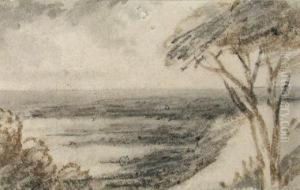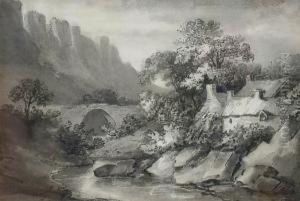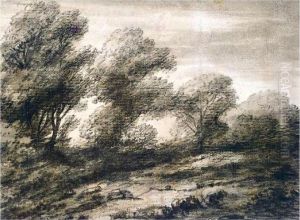Thomas Monro Paintings
Dr. Thomas Monro was a British physician and patron of the arts, notable for his role as a collector and facilitator of a circle of artists in the late 18th and early 19th centuries. Born in 1759, Monro was the son of Dr. John Monro, who was a physician to Bethlem Hospital for the mentally ill, also known as Bedlam. Thomas Monro followed in his father's footsteps, eventually becoming the principal physician at Bedlam from 1787 until his retirement in 1816.
Monro's interest in the arts was profound. He is particularly remembered for his 'Monro Academy' at his home in Adelphi Terrace in London, where young artists were invited to copy works of art, particularly drawings and watercolors. This informal art school played a significant role in the development of British watercolor painting. Artists such as J.M.W. Turner, Thomas Girtin, and Peter De Wint were among those who benefited from Monro's patronage. Monro owned a substantial collection of works by artists such as Rembrandt and Claude Lorrain, which provided a valuable resource for these young artists to study and emulate.
Monro's patronage extended beyond providing opportunities to copy from his collection. He also commissioned works and provided financial support to artists. His patronage helped to support the careers of many artists at a time when the traditional patronage system was in decline. Thomas Monro's contribution to British art, particularly in nurturing the talent of young artists, remains an important legacy. He died in 1833, leaving behind a legacy as a key figure in the history of British art collecting and education.





















